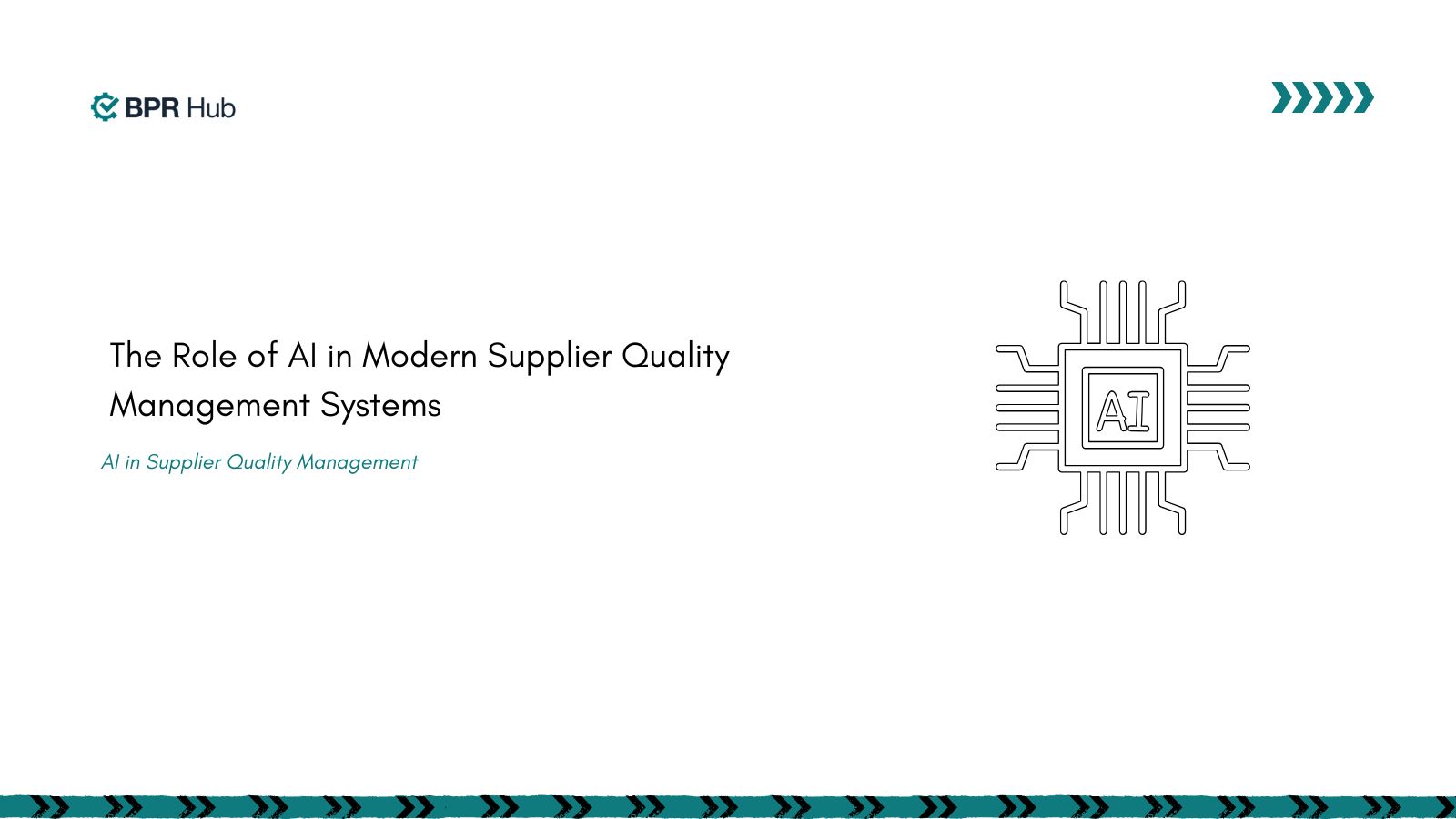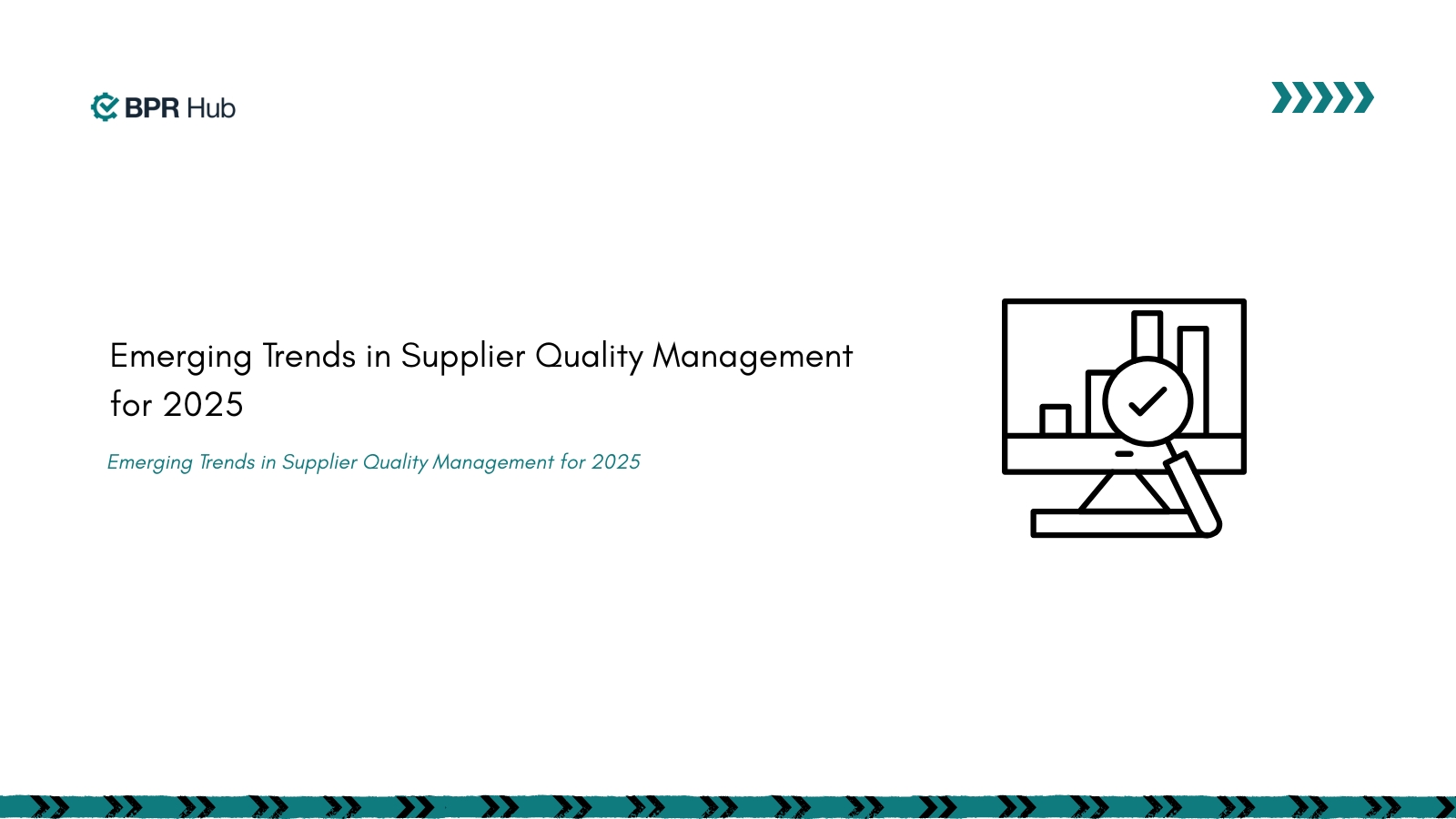Achieving ISO 9001 certification is a major milestone for any business, but maintaining it requires constant attention and effort. Organizations are always wondering how to maintain ISO 9001 certification, which involves a series of key actions, such as adhering to quality management principles, conducting regular audits, and making continuous improvements.
Yet, many organizations face challenges with document control, resource allocation, and adapting to changes in regulations. Overcoming these obstacles is key to ensuring your business remains compliant. Learn how to maintain ISO 9001 certification effectively with clear processes and dedicated strategies to drive success.
Why ISO 9001 Certification Matters for Businesses?
ISO 9001 is a globally recognized quality management standard that enables businesses to improve their operations, products, and services. For manufacturers and companies looking to optimize processes, enhance customer satisfaction, and strengthen their market position, ISO 9001 certification offers a clear advantage.
This certification helps organizations meet customer demands, ensure regulatory compliance, and maintain consistent, high-quality standards. The ISO 9001 framework is built on several core principles, including:
- Customer Focus: Consistently deliver products and services that meet or exceed customer expectations.
- Leadership: Cultivate a culture of accountability with strong direction from top management.
- Engagement of People: Encourage involvement at all levels to drive continuous quality improvement.
- Process Approach: Streamline and optimize processes for better efficiency and consistency.
- Continuous Improvement: Foster a culture of ongoing enhancement in quality and performance.
- Evidence-based Decision Making: Use data and facts to guide business decisions and operational improvements.
- Relationship Management: Build and maintain strong relationships with customers, suppliers, and stakeholders.
ISO 9001 not only guarantees quality and regulatory compliance but also encourages ongoing improvement, helping businesses stay agile and competitive in evolving markets. Let’s learn more about the benefits of ISO 9001 certification.
How ISO 9001 Certification Drives Business Growth?
By implementing ISO 9001's robust framework for quality management, organizations can unlock significant growth opportunities across various areas of their business. Here’s how:
- Improved Quality Management: Establishes a structured approach to processes, ensuring consistent quality and reducing errors in products and services.
- Enhanced Customer Satisfaction: Focuses on meeting customer needs, leading to stronger relationships and loyalty.
- Increased Efficiency: Identifies inefficiencies and reduces waste through continuous improvement, cutting costs.
- Better Risk Management: Helps spot potential risks and implement preventive measures to avoid disruptions.
- Stronger Market Position: Boosts credibility and brand reputation, attracting and retaining customers.
- Compliance with Regulations: Ensures adherence to legal and industry requirements, minimizing the risk of penalties.
- Employee Engagement: Fosters a culture of accountability and continuous improvement, involving employees in quality practices.
- Global Recognition: Demonstrates a commitment to quality, aiding expansion into international markets.
- Data-Driven Decisions: Promotes metrics and data analysis to guide decision-making and improve operations.
- Continuous Improvement: Encourages a cycle of ongoing refinement, helping organizations remain competitive in evolving markets.
As efficiently ISO 9001 certification drives business growth, maintaining this certification presents challenges that require ongoing commitment. Let’s explore common hurdles and strategies for sustaining ISO 9001 compliance.
What Are the Common Challenges in Maintaining ISO 9001 Certification?
Maintaining ISO 9001 certification comes with a set of challenges. These include:
- Document Control: Keeping all documentation up-to-date, accurate, and compliant can be time-consuming. Ensuring that everyone follows the correct procedures is crucial for maintaining certification.
Easily manage, update, and track your ISO 9001 documentation with BPRHub’s Document Hub.
- Employee Engagement: Continuously motivating employees to adhere to quality management processes and making sure they understand their roles in the QMS can be difficult, especially in larger organizations.
- Ongoing Monitoring and Auditing: Regular internal audits and reviews are essential to identify areas for improvement. This requires resources and commitment from all levels of the organization.
- Keeping Up with Changes: Changes in regulations, customer expectations, or internal processes can affect the QMS. Businesses must stay proactive and update their system as needed to stay compliant.
- Resource Allocation: Maintaining ISO 9001 certification requires dedicated personnel, time, and financial resources for training, audits, and system improvements.
- Resistance to Change: Employees and managers may resist new processes or changes required to meet ISO standards, making it challenging to foster a culture of continuous improvement.
Overcoming these challenges requires ongoing commitment, clear communication, and proper planning. The following are some tips on how to maintain ISO 9001 certification.
10 Tips on How to Maintain ISO 9001 Certification
A 2023 survey in the Republic of Serbia found that 87% of respondents believe ISO 9001 boosts customer satisfaction, and 82% report improved customer retention. These figures underscore the value of ISO 9001 certification. Here are 10 tips to help your business maintain compliance and stay competitive with ISO certification
1. Understand the Standard Requirements
Due to its broad scope, many organizations need help to implement all the clauses correctly. Start by familiarizing yourself with the core principles of the quality management system (QMS) outlined by ISO, such as a customer-centric approach, strong leadership, employee involvement, and focus on process-driven methods.
2. Establish a Robust Quality Management System (QMS)
Develop and implement a comprehensive Quality Management System (QMS) that includes clear processes for quality planning, monitoring, and control. The QMS should be structured to meet ISO 9001 standards, with a strong focus on continuous improvement. Document all processes, roles, and responsibilities, ensuring they are easily accessible to employees.
For example, a QMS that uses data-driven techniques, like those in Six Sigma, aims to achieve near-perfect products with a defect rate of just 3.4 per one million opportunities. While this isn’t perfect, it highlights the importance of data and systematic control in minimizing errors and enhancing quality. A robust QMS helps ensure consistency, accountability, and ease of compliance across the organization, driving both operational efficiency and quality improvements.
3. Conduct Regular Internal Audits
Regular internal audits are essential for maintaining ISO 9001 compliance, as they help assess the effectiveness of your QMS, identify gaps, and address non-conformities before external audits. External audits conducted by certification bodies validate your compliance and ensure your QMS meets the required standard. Hence, staying aligned with ISO 9001 is crucial.
Use an ISO audit checklist to cover all key areas, making the process more structured and efficient. Internal audits also allow for immediate corrective actions, keeping your system compliant and effective. By addressing issues early, you’ll be well-prepared for external audits, reducing the risk of non-compliance and ensuring a smoother certification process.
With BPRHub's Audit Hub feature, you can centralize your auditing process, identify areas for improvement, ensure ongoing compliance, and effortlessly schedule and track internal audits.
4. Implement Corrective and Preventive Actions
Corrective actions address existing problems, while preventive actions help to avoid recurrence in the future. Document each CAPA process and ensure that it is followed through to completion. This proactive approach not only helps to resolve non-conformities but also demonstrates a commitment to continuous improvement, which is a core principle of ISO 9001.
5. Allocate Adequate Resources
Maintaining ISO 9001 certification requires adequate resources, including time, personnel, and financial investment. Allocate resources specifically for maintaining the QMS, ensuring that your team has the tools they need to perform audits, manage documentation, and implement improvements. Having sufficient resources in place will help maintain the integrity of your QMS and ensure that quality management practices are consistently applied across all levels of the organization.
6. Engage Employees in Quality Practices
Involve employees in quality initiatives, provide opportunities for them to contribute ideas, and encourage ownership of quality practices in their respective roles. When employees understand the importance of ISO 9001 and actively participate in maintaining quality standards, they will have a more effective and sustainable QMS.
7. Monitor Key Performance Indicators (KPIs)
Monitor relevant KPIs, such as customer satisfaction, product defects, delivery performance, and employee productivity. These metrics provide valuable insights into the effectiveness of your QMS and help you identify areas for improvement. By consistently measuring performance, you can ensure that your quality standards are being met and make data-driven decisions to enhance processes.
8. Conduct Management Reviews
Conduct regular reviews with top management to assess the QMS's performance, review audit results, and discuss areas for improvement. These meetings should focus on strategic issues such as resource allocation, customer feedback, and compliance with the standard. Management reviews ensure that the QMS is aligned with the organization’s goals and that continuous improvement remains a priority.
9. Monitor customer feedback
Collect feedback from customers regularly through surveys, reviews, and direct communication. Analyze this feedback to identify potential issues, areas for improvement, and customer satisfaction levels. Monitoring customer feedback allows you to address problems proactively, improve customer relationships, and enhance your products or services to meet customer expectations.
10. Stay Updated with ISO 9001 Changes
Stay updated with any changes to ISO 9001 and adjust your QMS accordingly. Regular training helps to ensure that your workforce is equipped to maintain compliance, implement improvements, and contribute to the organization’s overall success in meeting ISO 9001 standards.
Start with BPRHub's Standards Hub to keep your QMS on track. With real-time monitoring and seamless updates to evolving standards, you can effortlessly ensure compliance.
Streamlining ISO 9001 Compliance with BPRHub
As we explored in the previous section, manually overseeing ISO 9001 compliance can lead to inefficiencies, human error, and missed deadlines. This is where software like BPRHub plays a critical role in ensuring consistent compliance and continuous improvement.
BPRHub simplifies maintaining ISO 9001 certification by automating compliance processes, reducing errors, and improving efficiency. This cloud-based platform streamlines workflows, provides real-time insights, and offers a comprehensive ISO Certification Support package.
It includes pre-designed documents and guidelines to facilitate certification, while real-time updates and notifications keep stakeholders informed of any changes, ensuring consistent compliance and continuous improvement.
BPRHub helps automate compliance tasks, simplify document management, track audits, and provide real-time insights to improve efficiency and ultimately make your ISO 9001 certification maintenance seamless.
FAQ’S
1. What are the challenges organizations face in maintaining ISO 9001 certification?
Ans: Common challenges include document control, resource allocation, employee engagement, resistance to change, and adapting to evolving regulations. Overcoming these obstacles requires regular audits, proactive updates, adequate resources, and fostering a culture of quality and continuous improvement.
2. How to maintain ISO 9001?
Ans: To maintain ISO 9001, regularly monitor and improve your Quality Management System (QMS) through internal audits, corrective actions, and management reviews. Engage employees in quality practices, allocate sufficient resources, track key performance indicators, and stay updated on ISO changes. Continuous improvement and customer feedback are crucial for sustained compliance.
3. What are the 7 basic principles of ISO 9001?
Ans: ISO 9001 has seven basic principles: customer focus, leadership, engagement of people, process approach, improvement, evidence-based decision-making, and relationship management. These principles help organizations improve performance, enhance customer satisfaction, and drive continuous improvement.
4. What are the 6 mandatory procedures for ISO 9001?
Ans: The six mandatory procedures for ISO 9001 include control of documents, control of records, internal audits, corrective actions, preventive actions, and management reviews.
5. How does BPRHub simplify ISO 9001 certification maintenance?
Ans: BPRHub automates compliance tasks, centralizes document management, and streamlines audits with real-time updates and notifications. Its cloud-based platform enhances efficiency, reduces errors, and ensures seamless alignment with ISO 9001 standards, helping businesses maintain certification with ease.
Get insights that help you minimize risks and maximize profits.
Dive deeper into manufacturing compliance with our free resources.
We get it, compliance can get tough.
Here are some additional resources to help.
We get it, compliance can get tough. Here are some additional resources to help.
Get updates in your inbox

.svg)
%20(1).svg)


.jpg)


%20(1).svg)

.avif)

